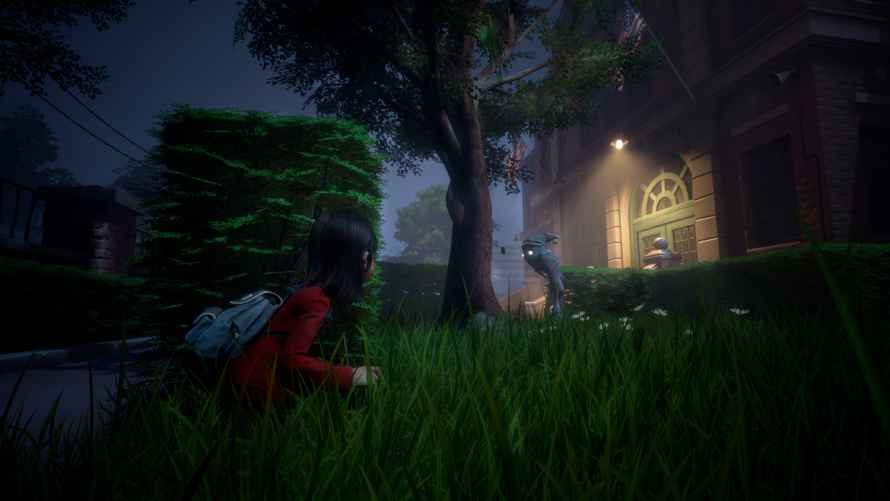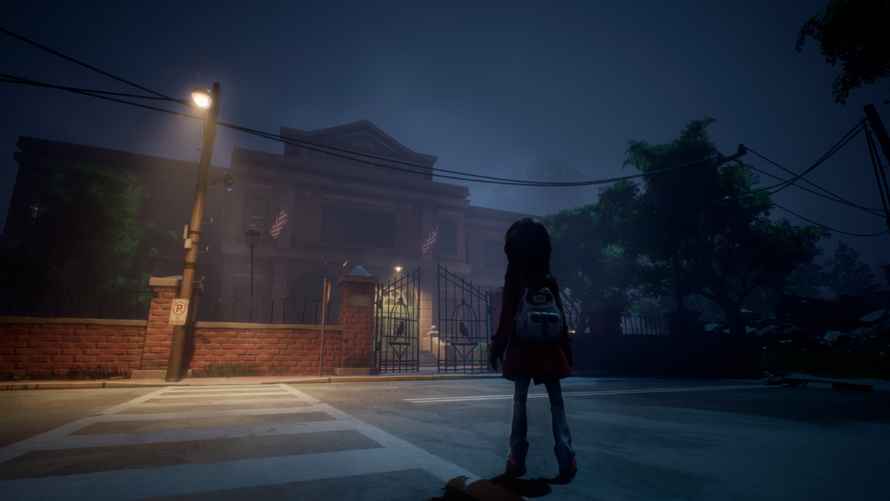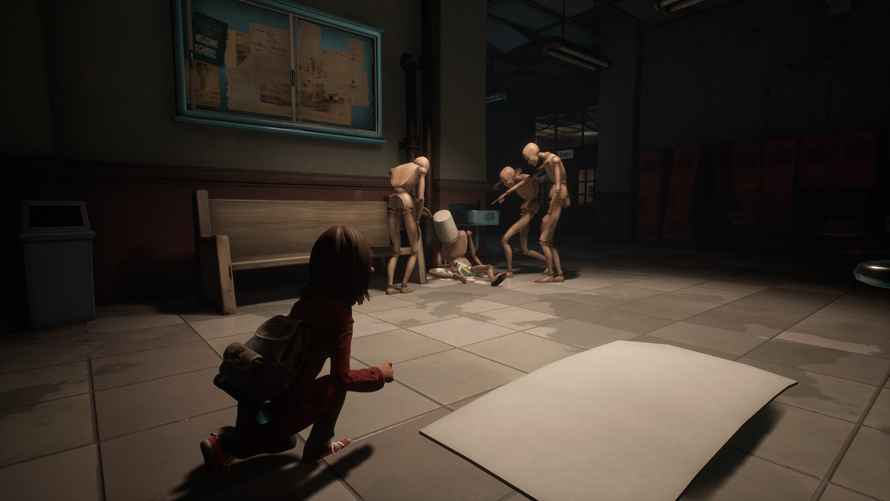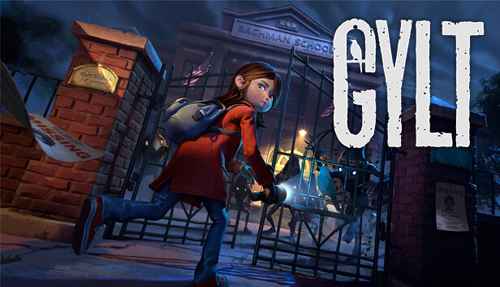Gylt Review
Find me someone who has never been bullied — either in their childhood or later — and you probably found yourself a bully. The lasting impact of bullies on impressionable youth and the resulting emotional and sometimes physical scars, underlie the narrative of Gylt. Tequila Works’ action puzzle game appeared as a Stadia exclusive. It has recently been ported to PC and consoles by Parallel Circles.
Off the Beaten Path
Gylt is about a young girl named Sally, whose cousin Emily has gone missing. As she goes about papering her town with missing child posters, she’s run off the road by bullies. She finds herself sneaking through ditches and tunnels before hopping a cable car back home. Upon reaching her town, relief turns to dismay. Her quaint little town is now a nightmare mirror version, filled with monsters. Trapped somewhere in the alternate reality town, Emily must be rescued before the pair can escape.
The bullies leave graffiti and notes everywhere, painful reminders of Emily’s harassment. There are a lot of questions to be answered. What happened to the town, and where did the monsters come from? Was Sally herself one of Emily’s tormentors — hence the game’s title? Not every question is answered.

Gylt’s narrative premise suggests a lot of psychological depth, the way some of Stephen King’s meatier fantasy does. Unfortunately, it too often skates on the emotional surface and doesn’t quite go far enough with its characters and their motivations. That said, the subject matter easily generates the flow of gameplay.
Lurking in the Shadows
Gylt is an action/puzzle/survival game. This translates to stealth and sneaking through the world and some simple combat with limited weapons. Essentially, Sally has a flashlight and later, a fire extinguisher. She uses both of these (and a few later ones) as weapons and to solve some simple environmental puzzles. There are health pickups in the form of asthma inhalers, soda cans to throw as distractions and a few other items like keys to collect. On the other hand, the large number of collectible story items really add context and emotional weight, and really help shape the tone. Although Gylt deals with subject matter that many kids can relate to, it’s definitely not a game for children.

While stealth and avoiding monsters is a viable strategy, combat becomes equally possible once Sally has her weapons. As action puzzle games go, Gylt is pretty derivative and doesn’t break any new ground. As Sally moves through the girls’ school and other environments, she can stealth through the shadows and avoid the monsters, or face them head-on. The monster design is often interesting, unsettling, or bizarre, but not really scary. There are a few pretty effective jump scares, however. Overall the game’s combat and bosses aren’t terribly challenging but they’re consistent with Gylt’s overall modest scale.
Grim, Dark Tale
There are at least two aspects of Gylt that are unassailably successful: its art and sound design. Like the best animated fairy tales, Gylt is a combination of appealingly rendered, stylized characters and ominous yet familiar environments, mixed with a darker visual subtext in the margins. The game’s writing, dialogue, and voice acting are all very good. They’re supported by detailed environmental sounds and perfectly effective music by veteran composer Cris Velasco. Velasco’s score ranges from intimate orchestral textures to suspenseful atonal cues. While I didn’t play the game on Stadia, the port to PC and consoles means that framerate drops or other hiccups are largely absent. Everything was smooth and sharp. Gylt is not an especially system-taxing game.

While it looks like a modern storybook tale, Gylt deals with some pretty intense subject matter that many can relate to. It would be easy to complain that Gylt doesn’t go deep enough in any direction or layer enough complexity on its basic systems. That would be true if the game was longer than its five-hour running time. Its mechanics might not be remarkable, but Gylt’s themes are impactful and its presentation is memorable and engaging.
***PC code provided by the publisher for review***
The Good
- Attractive art
- Good writing and acting
- Excellent score
- Important topic
The Bad
- Gameplay is unoriginal
- A bit shallow
- Very short

